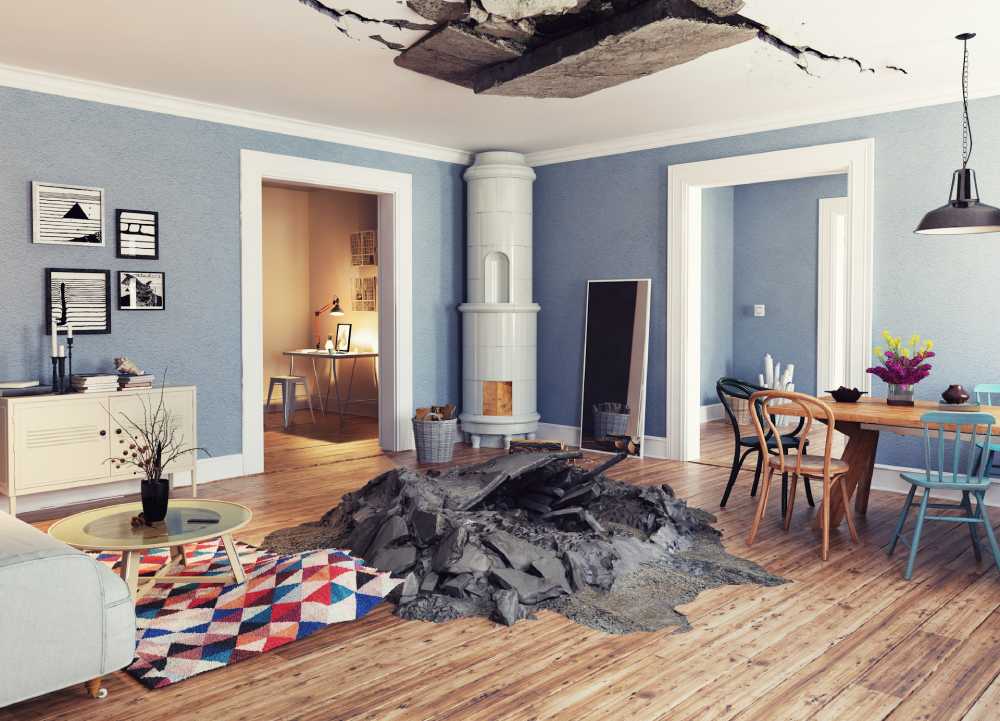Water Damage 101: Common Causes and Signs to Watch For
Water damage is a big hassle, to say the least. When your home is flooded and water seeps into the floor and walls, professional cleanup is crucial. Check out these common causes of water damage and signs to look for to help safeguard your home.
Common Water Damage Causes
32% of American homeowners say their residence has been impacted by severe weather in the last five years. Flooding is a top concern, and it can start from heavy rain, wind damage, tornadoes, and even fires.
In addition to natural disasters, many water damage cases seen by Valley Restoration & Construction are linked to plumbing problems. Some of the most usual causes of water damage include:
- Condensation on the AC unit
- Old PVC or rubber water supply lines
- Damaged or disconnected appliances
- Clogged drains and sump pumps
- Poor roof drainage
- Clogged gutters
- Sewer/septic tank backups
- Faulty sprinkler systems and water heaters
- Overflowing toilets and bathtubs
- Leaking or burst pipes
Water damage restoration experts are eager to identify the cause of water damage in your home, which provides important insights into the best treatment methods and protocols.
Water Damage Signs to Look For
You can protect your property by being proactive about water damage. If you notice any of these signs, it’s best to get a professional in to have a look straight away:
- Puddles and/or water stains
- Swollen floorboards
- Warped walls
- Cracked ceilings
- Bubbling/peeling paint
- Growth of mold or mildew
- Sagging/soft spots in the wood
- Structural damage
- Damp, musty odor
It’s important to note that water damage isn’t always obvious, and sometimes it can go undetected for an extended period of time. You may have a slow leak somewhere in the house, or a failing plumbing/sewer system.
As soon as you notice something unusual, it’s a good idea to get a second opinion to address the damage. Keep in mind the average cost of restoring a home after water damage ranges from $1,300 to $5,600, according to Forbes, so the sooner you get help, the better.
What Happens Next With Residential Water Damage
So, you’ve noticed signs of water damage and a professional has confirmed the source of the problem. What comes next? Well, a thorough inspection will identify the extent of the damage, including the category of contamination and potentially hazardous contamination.
Then they will start the repair and restoration process, beginning with standing water extraction from the flooded area. After using submersible pumps and heavy-duty industrial vacuums, specialists check for hidden saturation with infrared thermal cameras or moisture meters.
Next, it’s time to dry and dehumidify the room, which takes longer for Class 3 or 4 water damage that requires wall/floor removal. Commercial fans, air movers, and dehumidifiers help to improve air quality, while you can also open windows and doors for a notable boost in air circulation.
Now comes cleaning and sanitizing every surface with antimicrobial solutions to ensure the room can be safely used once more. If there’s anything that can’t be salvaged, such as drywall and carpet padding, they will be removed before the final cleaning and restoration work. Restoring each room to its previous condition takes time, but is definitely a possibility with water damage restoration experts.

